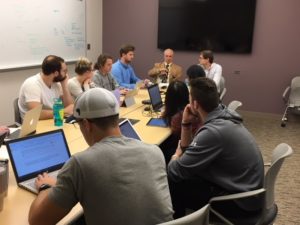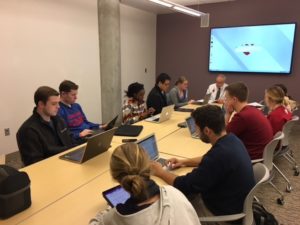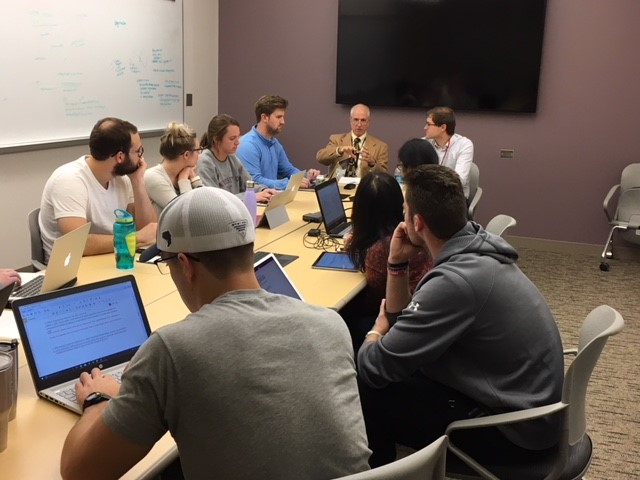Undergraduate medical education has long been a delicate balance between providing knowledge of basic sciences and providing experience on clinical rotations. Traditional education curricula have approached this as an even split over 4 years of medical education. The first two years of basic science education were typically classroom lectures of topics over several month semesters. However, there have been new trends in medical education to explore alternate pathways, given the realization that as adult learners, medical students require more interactive learning experiences. The UNMC College of Medicine is one place where this innovative curriculum design is being implemented. What once were semester-long traditional Microbiology and Immunology courses have now been transformed into an integrated focused block called Defenses and Invaders (course directors: Sara Bares MD, Paul Fey PhD, Geoff Thiele PhD, and Andrea Zimmer MD). The ingenious course name conjures up images of epic battles between brave immune system soldiers and their formidable adversaries constantly trying to infiltrate our bodies. Defenses and Invaders inspires medical students to learn more about these sneaky organisms, why they do what they do, and how our own bodies protect us from harm, sometimes even without our knowledge!
The new course design involved some traditional lectures, but had the addition of multiple small group sessions. In these sessions, 12 or fewer first year medical students had the opportunity to have intimate time with one or two faculty members, most of whom were clinical Infectious Disease faculty, in addition to Microbiology/Pathology faculty. They reviewed cases together as a group, with students learning and teaching each other through specific clinical scenarios focusing on the microbiology that clinicians use for decision making, with added pearls from faculty facilitators. This approach created an earlier opportunity for interaction between medical students and clinical faculty, and provided a way to expose students to disease processes caused by microbial pathogens to make them more relatable, interesting and memorable.
The ID faculty enjoyed their interactions with the students and the cases sparked some interesting questions and discussions within the groups. While it will be years before the effect of the curriculum can be tested by board scores, the redesign has already borne fruit of interest in Infectious Diseases, with many students feeling emboldened to directly engage the experts, arrange meetings and volunteer to shadow in the ID clinics. Though not the intent of the course, this is proof that a grass-roots effort by Infectious Diseases groups can help to increase interest in and awareness of our specialty. Infectious Diseases faculty will also be providing lectures within other block topics; and core exposure to Infectious Diseases topics will be revisited throughout the next year and a half, with plans for an Infectious Diseases synthesis block before the students’ clinical years, to review concepts for boards and wards.
Content courtesy Dr. Andrea Zimmer, MD

Dr. Mark Rupp (Professor of Medicine and Division Chief, Infectious Diseases) teaching his small group about respiratory infections

Dr. James Wisecarver (Professor of Pathology/Microbiology and Medical Director, Clinical Laboratory) and his small group

Dr. Diana Florescu (Associate Professor of Medicine and Transplant ID physician) engaged in discussion with her group

2 comments